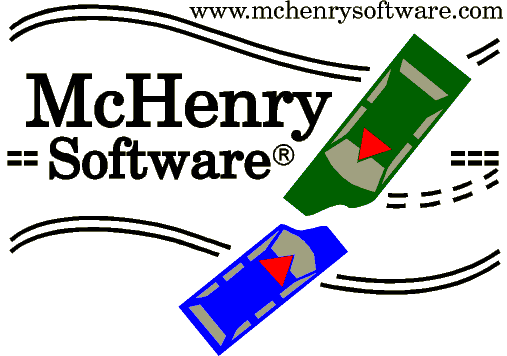

M-crash is an acronym for McHenry CRASH Reconstruction of Accident Speeds on the Highway. The m-crash program constitutes a major extension and refinement of the CRASH3 program (e.g., References 17 through 26) with the attained objective of significantly improving the reliability and accuracy of results.
The general approach to trajectory analysis in the "CRASH" programs (i.e., CRASH2, CRASH3, EDCRASH (e.g., Ref. 27, 28)) has been to initially approximate the individual vehicle speeds at separation by means of work-energy relationships applied to the distances and characteristics of each of the vehicles travel from impact to rest. The calculated separation speeds are then included in an application of the principle of conservation of linear momentum to the collision to approximate the vehicle impact speeds.
The approach to damage analysis for the "CRASH"
programs has been to approximate the total amount of energy absorption
(to the point of common velocity) on the basis of empirical crush resistance
properties. A relationship for the "virtual" crush properties
of the vehicle(s) are derived from full-scale crash tests from which the
energy dissipated (excluding restitution) is determined as a function of
the residual crush. (The term "virtual" is used to emphasize
the fact that the crush energy is dissipated during the dynamic crushing
of the vehicles and that equating the residual (restituted) crush to the
energy dissipated is a "virtual" relationship, i.e., they
do not occur simultaneously). The "virtual" crush properties
are then applied to measured dimensions of structural crush for each vehicle
in an individual accident to approximate the resulting speed change (excluding
restitution effects). The inherent limitations of a linearalized "virtual"
crush properties combined with limited crash test data for individual makes,
models, years and speeds limits the usefulness of the "damage only"
solutions to individual accident reconstructions. (Please see a brief review
of the CRASH damage analysis algorithm for additional information).
The published error levels associated with various versions of "CRASH" programs must be viewed in terms of the intended applications. In large scale statistical studies (e.g., NCSS, NASS, FARS) the average error is the important consideration. However, in an application to an individual accident reconstruction, the maximum probable error in the given application must be defined as a part of any related conclusions. The widespread distribution of the EDCRASH program (e.g., Ref. 27, 28) has unfortunately led to many inappropriate applications that are frequently accompanied by overstated claims of reliability and accuracy. It should be noted that the EDCRASH "validation" calculation of percent error for the RICSAC test runs on the basis of the combined impact speed (Ref. 28) does not appear to serve any useful purpose, other than yielding smaller percentages.
The following is a brief summary of extensions and refinements which have been incorporated in the m-crash computer program:
The benefits of the cited m-crash extensions and refinements, in terms of error reduction, are presented in Table 1 and Table 2. Please also see recent SAE papers 97-0949 and 97-0960 for complete discussions of the extensions and refinements of the CRASH computer program.
For a detailed presentation of CRASH see The Algorithms of CRASH
Please also see Links to the WWW homesites of other versions of CRASH.
NHTSA CRASH3 Technical Manual, PDF file, 8 megs in size (Jan 2012: Note, the previous link to the NHTSA site has been moved or removed by NHTSA. We direct you to our local copy of the manual until we determine if they moved or removed the CRASH3 manula from the NHTSA site)
©McHenry Software, Inc.